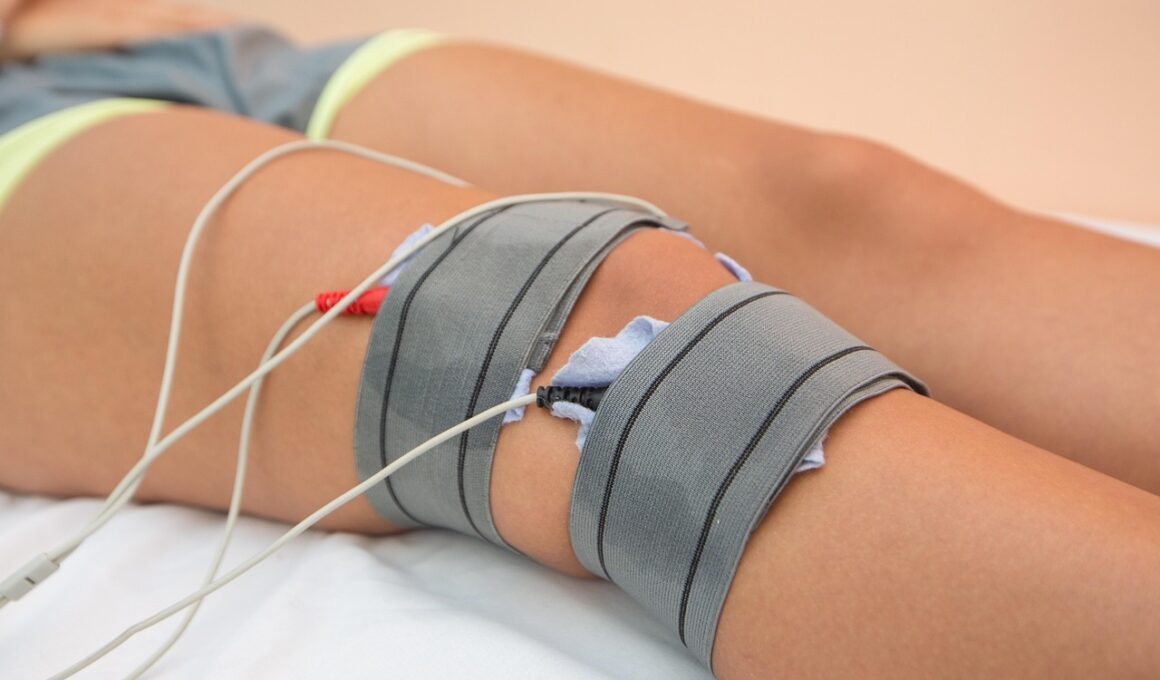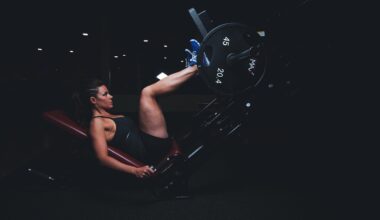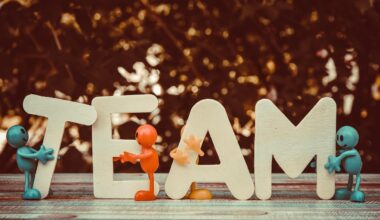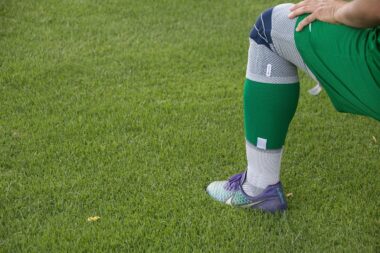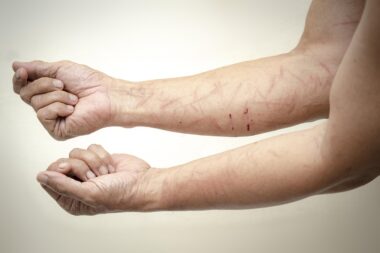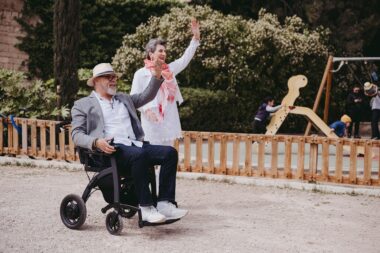Managing Chronic Orthopedic Conditions Through Rehabilitation
Chronic orthopedic conditions can greatly affect an individual’s quality of life and daily functionality. Effective management through rehabilitation is essential to help individuals regain mobility and overcome pain. The rehabilitation process begins with a comprehensive assessment by a healthcare professional who evaluates the individual’s condition and devises a tailored rehabilitation plan. This plan may include physical therapy, personalized exercise regimens, or assistive devices, among other options. Education plays a critical role in the rehabilitation process. Patients must understand their conditions, appropriate exercises, and pain management techniques. Over the course of rehabilitation, the focus shifts from merely alleviating symptoms to improving overall strength and flexibility. This proactive approach empowers patients to take control of their recovery journey. Regular follow-ups with rehabilitation specialists ensure that patients stay on track and make adjustments as needed. Setting realistic, specific goals can help maintain motivation and progress. Collaboration across multidisciplinary teams can enhance outcomes, providing comprehensive support. Overall, orthopedic rehabilitation can significantly improve physical function and emotional well-being, allowing individuals to successfully navigate their daily lives without the hindrances of chronic orthopedic conditions.
The Role of Exercise in Rehabilitation
Exercise is a cornerstone of managing chronic orthopedic conditions, facilitating recovery, and promoting long-term health benefits. Physiotherapists design exercise programs tailored to individuals’ specific needs, ensuring exercises are age-appropriate and consider other underlying health issues. These tailored exercise programs often include strengthening, flexibility, and aerobic conditioning components. Strength training targets the muscle groups that support affected joints, enhancing stability and reducing pain. Flexibility exercises improve the range of motion, helping patients regain lost mobility and function. Aerobic conditioning elevates heart health, stamina, and overall fitness. Patients must be active participants in their rehabilitation journey, adhering to prescribed exercise routines diligently. Engaging in consistent physical activity can decrease the risk of further injury and degeneration over time. To track progress, keeping a rehabilitation journal can be immensely beneficial, helping individuals monitor their exercises and improvements. Furthermore, group classes can add an element of support and motivation, as participants share their experiences and encouragement. Technology, such as apps for fitness tracking, can provide individuals with additional resources to stay engaged and committed to achieving their rehabilitation goals. Therefore, integrating exercise into rehabilitation maximizes recovery potential.
Nutrition plays a critical role in orthopedic rehabilitation. A well-balanced diet aids in recovery and enhances overall health, supporting the body through healing. Proper nutrition can contribute to better muscle recovery, quicker healing of tissues, and improved energy levels, all essential for effective rehabilitation. Integrating anti-inflammatory foods like fatty fish, nuts, fruits, and vegetables can enhance recovery outcomes. A balanced diet rich in vitamins and minerals is essential to support bone and joint health, preventing further complications or deterioration. Hydration also significantly impacts recovery; it is essential to keep the body hydrated to facilitate optimal function. Healthcare professionals often encourage patients to consult with nutritionists to optimize their dietary intake during rehabilitation. Nutritional education can be a valuable addition to the rehabilitation process, empowering individuals to make nutritious food choices and maintain healthy eating habits. Patients should keep in mind that nutrition should complement exercise; together they create a holistic approach to recovery. Knowledge and engagement in nutritional choices can lead to a positive influence on rehabilitation outcomes, enhancing both physical and mental well-being during recovery from chronic orthopedic conditions.
Psychological Aspects of Rehabilitation
The psychological components of orthopedic rehabilitation are crucial for successful recovery, as chronic discomfort can lead to various emotional challenges. Patients often experience anxiety, depression, or frustration stemming from their conditions, creating barriers to effective rehabilitation. Mental well-being is an integral aspect of overall recovery, making it imperative to address any psychological issues during the rehabilitation journey. Incorporating mental health support, such as counseling, can help individuals cope with the emotional impact of their injuries. Techniques such as mindfulness, cognitive-behavioral therapy, and relaxation exercises can equip patients with tools to manage stress and improve their mindset. Establishing social connections and support systems can also positively influence motivation and emotional resilience during recovery. Support groups provide opportunities for sharing experiences and foster feelings of community. Family involvement in rehabilitation can also offer emotional backing, contributing to a more cooperative and understanding environment. Therefore, addressing psychological aspects enhances recovery, as emotional resilience empowers patients to tackle challenges effectively. Ultimately, recognizing the mind-body connection is pivotal in achieving overall success in orthopedic rehabilitation and managing chronic conditions.
Assistive devices serve an important role in the rehabilitation process for those with chronic orthopedic conditions. They can aid in mobility, enhance independence, and promote safety during daily activities. Devices such as braces, walkers, or canes are often prescribed to alleviate comfort and improve functionality. Each assistive device should be chosen based on individual needs, ensuring the appropriate fit and functionality. Healthcare providers evaluate patients thoroughly to recommend devices that will facilitate rehabilitation and support healing. Education on the proper use of these devices is crucial to prevent further injury or strain. Patience is essential while adjusting to life with assistive devices. Gradually incorporating them into daily routines can help patients adapt and regain confidence in their movements. Proper training in device usage often leads to a smoother transition back to normal activities, as they gradually become more comfortable and independent. Awareness of support for accessibility can also promote inclusion in social and recreational activities. Thus, integrating suitable assistive devices is pivotal in enhancing independence and improving the quality of life during the orthopedic rehabilitation process.
Preventing Future Injuries
Preventive strategies are vital for individuals recovering from chronic orthopedic conditions, aimed at minimizing the risk of re-injury or further complications. Education on body mechanics and ergonomic practices is crucial; understanding how to move safely can greatly reduce stress on joints and muscles. Implementing appropriate warm-up and cooldown routines before engaging in physical activity can prevent strains and injuries. Developing strength and flexibility through prescribed exercises can maintain joint stability, while balance training can enhance coordination and body awareness. Lifestyle modifications, such as maintaining a healthy weight and engaging in regular physical activities, can also significantly reduce risks associated with orthopedic conditions. Patients are encouraged to listen to their bodies, identifying areas of discomfort or fatigue to avoid overexertion. Establishing routine follow-ups with healthcare professionals can identify potential issues before they escalate. Educational sessions focused on prevention strategies can encourage a proactive approach in patients. Thus, a comprehensive preventive strategy is essential to maintaining long-term orthopedic health and avoiding future injuries, ensuring individuals remain active and engaged in their daily lives.
Community resources and support systems play a significant role in orthopedic rehabilitation for those with chronic conditions. Access to local programs, such as group exercise classes or wellness workshops, can foster a sense of community and accountability. Furthermore, community support can provide individuals with valuable resources and tools to aid in their rehabilitation journey. Healthcare professionals can help connect patients with these resources and support networks. Peer mentoring programs also offer individuals the opportunity to connect with others who have experienced similar challenges. Involvement in community initiatives not only fosters social connections but also encourages physical activity and engagement, critical for recovery. Online platforms and forums allow individuals to share experiences and gain insights from others managing similar conditions. These interactions can provide encouragement, strategies for overcoming obstacles, and a sense of belonging during rehabilitation. Active participation in community resources empowers patients, equipping them with knowledge and motivation. As such, community support can significantly enhance the rehabilitation experience, contributing positively to the overall outcomes for individuals managing chronic orthopedic conditions.
Conclusion
Managing chronic orthopedic conditions through rehabilitation is an ongoing process that encompasses various dimensions contributing to individuals’ overall quality of life. Effective rehabilitation incorporates exercise, nutritional guidance, psychological support, assistive devices, preventive strategies, and community engagement. Each element plays a vital role in empowering individuals to regain mobility, manage pain, and reclaim their independence. A collaborative approach involving multi-disciplinary teams, including healthcare providers, nutritionists, and mental health professionals, can maximize the effectiveness of rehabilitation efforts. Active patient participation in their rehabilitation journey fosters ownership of the healing process, motivating individuals to commit to their goals and strategies. Educating individuals about managing their conditions, recognizing potential barriers, and developing support systems leads to more successful recovery outcomes. By addressing both the physical and emotional aspects of orthopedic rehabilitation, individuals are better equipped to handle the complexities of chronic conditions. Ultimately, holistic management strategies lead to improved physical function and emotional well-being, allowing individuals to embrace life without limitations. Continuous support throughout their journey paves the way for long-term health and wellness, ensuring that individuals thrive beyond their orthopedic challenges.
